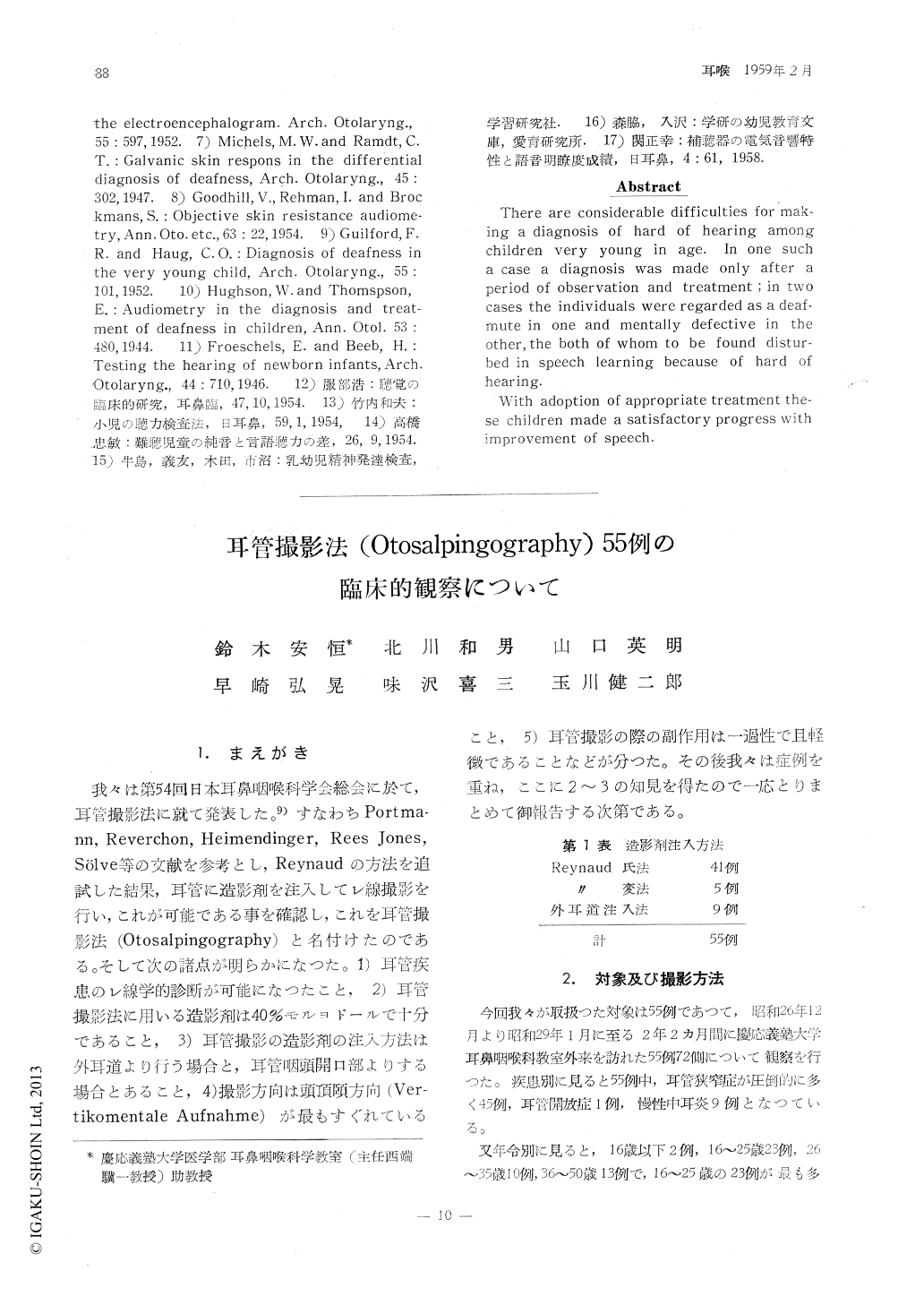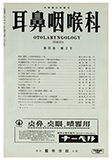- 有料閲覧
- 文献概要
- 1ページ目
1.まえがき
我々は第54回日本耳鼻咽喉科学会総会に於て,耳管撮影法に就て発表した。9)すなわちPortmann,Reverchon,Heimendinger,Rees Jones,Sölve等の文献を参考とし,Reynaudの方法を追試した結果,耳管に造影剤を注入してレ線撮影を行い,これが可能である事を確認し,これを耳管撮影法(Otosalpingography)と名付けたのである。そして次の諸点が明らかになつた。1)耳管疾患のレ線学的診断が可能になつたこと,2)耳管撮影法に用いる造影剤は40%モルヨドールで十分であること,3)耳管撮影の造影剤の注入力法は外耳道より行う場合と,耳管咽頭開口部よりする場合とあること,4)撮影方向は頭頂頤方向(Vertikomentale Aufnahme)が最もすぐれていること,5)耳管撮影の際の副作用は一過性で且軽微であることなどが分つた。その後我々は症例を重ね,ここに2〜3の知見を得たので一応とりまとめて御報告する次第である。
The Eustachian tube was visualized by instiilation of radio-opaque material in 55 patients affected with either Eustachian tube stricture or chronic otitis media.
(1) The contour of the Eustachian tubes in general may be classified into two specific types. In the first type the caliber of the tube appeared to be uniform throughout the length of the tube which may be subdivided into those that might be small or large. In the second type the tube showed a constriction somewhere in its course which may be further subdivided into those showing one, two and three such constrictions. Ones that showed 2 constrictions appeared to be the most prevalent (57%). The first type is named the uniform type while the second as the constricted type.
(2) Aside from some special cases the condition of the Eustachian tube on both sides of the same individual appeared to be similar.
(3) Chronic otitis media appeared to be the prevalent among those whose Eustachian tubes were large uniform in type. Tubotympanitis was found in the small uniform type.

Copyright © 1959, Igaku-Shoin Ltd. All rights reserved.


